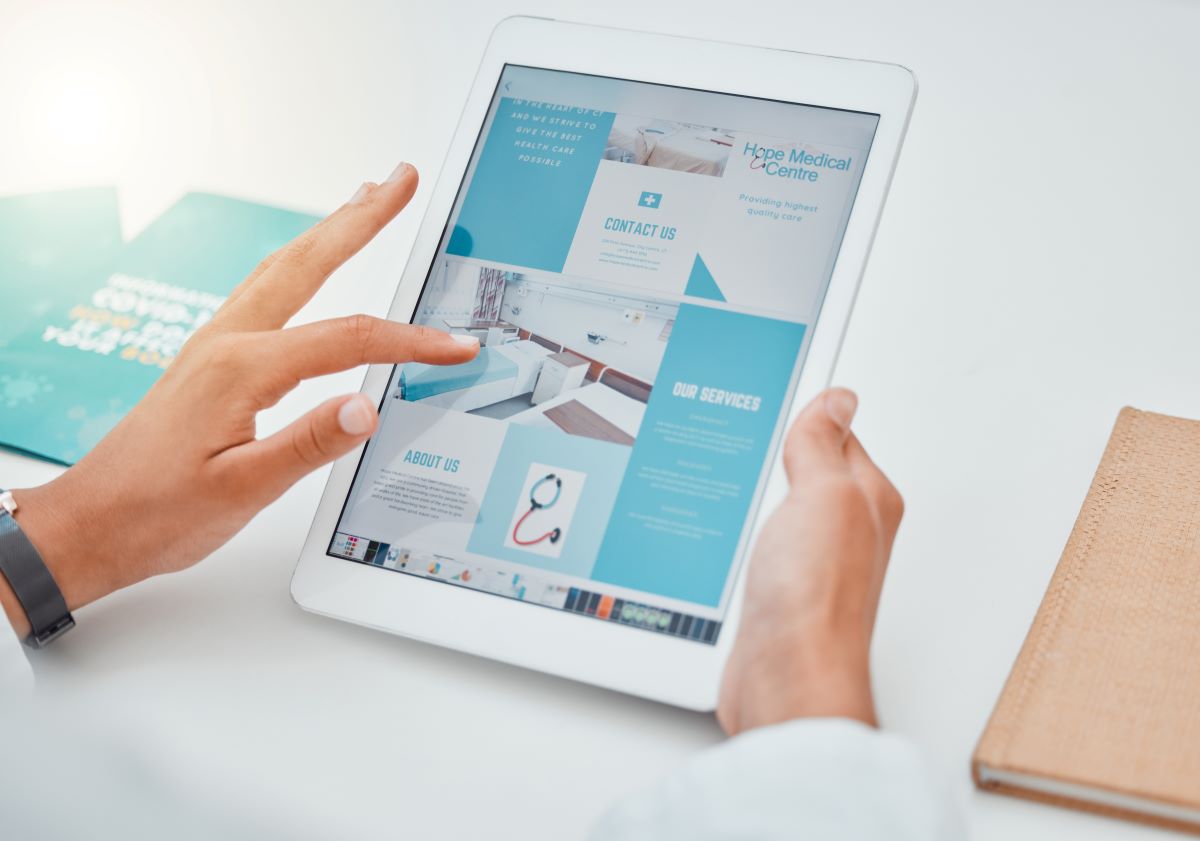Healthcare Advertising: Overview and Guide for Facilities

Advertising is used to establish brand awareness and increase sales in industries like retail and technology. Despite its rigid rules and regulations, advertising in healthcare works in a similar way. What facility administrators might not understand, however, is that developing a high-quality healthcare advertising strategy can also boost patient engagement, satisfaction, and health outcomes.
In this article, we explain the basics of advertising, marketing, and PR functions, do a deep dive into the importance of advertising for healthcare organizations, and review the different channels that healthcare advertising companies can utilize to improve a patient’s journey and gain long-term loyalty.
Healthcare Marketing, Advertising, and PR: Key Differences
Creating a strong and respected brand requires collaborative advertising, marketing, and public relations (PR) efforts. But what are the main differences in these related disciplines?
Healthcare Marketing
These departments work to identify patient needs and determine how their company can meet them. They perform research on market trends and plan pricing and distribution tactics to strategically position these products and services in the market.
Healthcare Advertising
These teams implement marketing strategies and promote products and services in different advertising channels. They work to grab the attention of patients, create a demand for healthcare services, and set their company brand apart from the rest.
Healthcare PR
Public relations personnel manage the overall brand image of a company and foster healthy relationships with patients and community members. They manage crisis situations and relay patient opinions back to marketing and advertising professionals to effectively adjust outreach strategies. Increased brand awareness can have positive cascading effects across advertising channels, making it more likely for users to engage with your messaging.
While each of the three disciplines has clearly defined responsibilities and goals, the interconnectedness of these departments is what garners organizational success. They work synergistically to communicate brand values, respond to consumer feedback, and promote an honest and consistent company mission.
What Are the Benefits of Healthcare Marketing and Advertising for Facilities?
Healthcare marketing and advertising efforts can make a significant improvement in a company’s operational efficiency. Other key advantages include:
- Strengthened patient loyalty. When individuals feel cared for and listened to, they often stay loyal to organizations and are more likely to refer friends and family members to your facility.
- Optimized patient engagement. When healthcare organizations distribute accurate and trustworthy information, patients feel empowered to advocate for their own health and wellbeing.
- Stronger relationships with your community. Participating in local social events and fundraisers shows your facility’s desire to be involved in the lives of the people you serve. Show up for your community members and they’ll likely show up to your organization the next time they need care.
- Improved organizational credibility. Organizations that market effectively show that they understand what patients need. Molding outreach efforts to align with your company mission, vision, and values helps solidify your brand image.
- Higher employee satisfaction scores. Nurses and other care providers stay at their jobs because they make a positive impact on the patients they serve. It’s not surprising that healthcare facilities with better reputations often have happier and more fulfilled employees.
Which Healthcare Advertising Channels Are Most Effective?
Patients choose to receive care in facilities they can trust. Therefore, the key to successful healthcare marketing is ensuring authenticity and honesty in the messages your organization shares.
When brainstorming which types of healthcare advertising are most meaningful to your patient/client base, it’s important to use multiple strategies to appeal to all generations, genders, and socioeconomic groups.
Below, we’ve listed frequently used advertising platforms and strategies, with advice on how healthcare companies can harness those strategies for optimal success.
| Advertising Channel | Healthcare-Specific Strategies for Success |
|---|---|
| Websites and Search Engines | Nearly 94% of patients reference the internet for medical information and 77% of people start their healthcare journey via a search engine (Google, Yahoo, Bing, etc.).
Design websites for easy browsing and optimize SEO strategies to reach patients looking for care — even those living hundreds of miles away from your facility. Gone are the days of brick-and-mortar care alone; moving forward, digital advertising is one of the keys to organizational success. |
| Social Media Platforms | Over 79% of patients ask for health-related advice on social media(Facebook, Instagram, LinkedIn, TikTok, Pinterest, etc.). Appealing to these consumers is an excellent way for facilities to connect with younger generations.
Care providers, especially young nurses or new graduates, often appreciate getting involved in these marketing initiatives. By promoting the voices of reputable clinicians, you can build brand credibility and help your team get involved in outreach efforts. |
| In-Person Outreach | Advertising at local parades, fairs, and sporting events helps improve your brand image for people likely to need your care. Handing out healthy packaged snacks and other branded promotional items like pens and tissue packs can keep your healthcare company fresh in the minds of community members. |
| Print and Other Visuals | Advertisements in magazines and newspapers allow those who may not use digital media to gain exposure to your healthcare brand. Billboards, community signage, and city bus advertisements help locals interact with your organization during their commute or while exploring their neighborhood.
Televised commercials and hospital news interviews can help individuals see your facility and care team without ever stepping foot on facility grounds. PR directors are helpful at organizing these visuals and have the experience and skill necessary to appeal to viewer interests. |
Promote Your Brand Image and Help Patients Thrive
Ineffective healthcare advertising can seem cringe-worthy and dishonest — marketing authentically is challenging. Follow our free IntelyCare newsletter to learn more unique and creative ways to appeal to your patients and develop your facility’s reputation for high-quality care.

